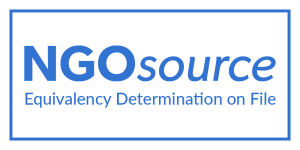The main goal of electricity provision is to keep the consumer’s power whenever needed. Growth of electric vehicle, automation system, and shifting to electric heater increase the dependency of human activity with electricity. The designed power system is expected to withstand disturbance and avoid significant blackout in the system. The power system faces various disturbance includes generator outage, components or line failure, animal or tree’s bark hits the line. Power outage not only simply turns the bedside lamp off but also could lead to major disruption of the industry’s activities, discontinuance of the hospital’s activity, and communication networks failure. The event of major blackout may cost huge financial loss depends on its scale (number of powers lost, customers affected, and duration) (Adibi & Martins, 2015). A blackout in US-Canadian on 14 August 2003, impacted 50 million people and 61,800 MW loss, estimated to have 4.5 to 10 billion USD of economic loss (ELCON, 2004). A Recent major blackout in the Jakarta-West Java area was estimated to cost PT PLN, the state-owned electric company, 90 billion rupiahs (6.3 million USD) loss and approximately 1 trillion rupiahs (70.5 USD) of customers compensation.

Figure 1 Growing reliance on electricity (Energy Research Partnership, 2018)
Reliability and Resiliency
A reliable and resilient power system is essential to provide electricity to the customer consistently. The power system has been designed to withstand disturbance with a certain reliability approach. The Reliability of the a power system means the ability of power system to provide adequate supply to the consumer with expected quantity and quality (Clark-ginsberg, 2017). The conventional approach is to maintain the system withstanding an outage caused by a single component (N-1) or even two components (N-2) failures. Reliability actions are designed to face average events with high probability, low impact disruption. However, this traditional approach has recently challenged extreme events that lead to a catastrophic failure on the power system. One major event is Hurricane Sandy which damaged thousands of electrical networks and several substations, affecting more than 8 million customers (The Gridwise Alliance, 2013). Such an event may have a low probability of occurrence but have a high impact on the power system. Thus, a resilient power system is essential to withstand such extreme events.

Figure 2 Resilient and less resilient system visualization (Clark-ginsberg, 2017)
Resiliency and reliability are two interrelated ability of a power system to provide electricity supply to the consumer or, in simple way, to keep the lights on. Resiliency is rooted in the Latin word “resilio” or leap/bounce back (Alexander, 2013). While reliability focuses on consistently supplying adequate electric power to the consumer. Resiliency is defined as the ability of the system to anticipate, absorb, and recover from high impact, low probability event (Panteli & Mancarella, 2015). Resilient power system considers how fast the system will recover following the extreme event as in extreme condition, and some disturbance may occur simultaneously. A more resilient system maintains system performance well and recovers fast following a disruptive event, as seen in Figure 2. Resiliency also refers to learning and doing adaptive actions to prevent any unexpected event in the future with a possible change in structure or operation (NAESB, 2017). Resiliency works on specific threats, while reliability is evaluated regardless of the threats (Li & Shahidehpour, 2017). Some of their differences are summarized in Table 1.
Table 1 Reliability and Resilience Differences (Modified from (Panteli & Mancarella, 2015))
| Reliability | Resilience |
| High probability, low impact | Low probability, high impact |
| Static | Adaptive, ongoing, short and long |
| Evaluates the power system states | Evaluates the power system states and transition times between states |
| Concerned with customer interruption time | Concerned with customer interruption time and the infrastructure recovery time |
Table 2 Threats for Power System Classifications (Adapted from (NAESB, 2017; Unel & Zevin, 2018))
| Natural Threats | Technological Threat | Human-caused Threats |
| Drought and water shortage
Extreme weather Flood and storm surge Hurricane & Tornado Earthquake & Tsunami Volcanic Event |
Dam failure
Nuclear power accident Faulty equipment Power plant fire Aging Infrastructure |
Cyberattack
Terrorism Physical attack Intentional Electromagnetic pulse Operation error |
Unpredictable catastrophic events threaten the resiliency of the power system. The potential causes are ranging from natural threats, technological threats, human-caused threats, and even a combination of them, as shown in Table 2. In 2018, Lombok’s big earthquake caused a significant power outage in Lombok. The restoration process took three days to recover 70% of the electricity as stated by PT PLN representative. Long dry season and heatwaves impact the energy generation of hydropower. The case is even worse for a multifunctional reservoir for power and agriculture. Extreme weather condition threatens and damages variable generation, such as wind (both offshore and onshore) and solar PV. Nuclear power plant failure in Fukushima was the example of a technological failure following the natural causes, Tsunami (IAEA, 2015). Software and operation error lead to one of the largest blackout, Northeast blackout, in US and Canada history affecting more than 50 million people and four days of full restoration (US – Canada Power System Outage Task Force, 2004). The growing application of IT system on the power grid also exposes the power system from cyberattacks (Lee, Assante, & Conway, 2016). Figure 3 presents the estimated amount of warning time and restoration time following each type of disruptive event. Lines show a representation of the variability of the estimation.

Figure 3 Mapping the source of power system disruption (NAESB, 2017)
Different actions required by various threats make a vulnerability assessment important in designing a resilient power system. No common action, no common solution, could cover all the threats. Underground lines may be resilient to avoid wind force and storms, but they are exposed to the earthquake and flood threats, for instance. Big security budget could not guarantee system resiliency to cyberattacks if the allocation is only for physical security. A system will be more vulnerable to other threats if it is only designed for specific threats (Li & Shahidehpour, 2017). Thus, resiliency defines, again, a case-by-case approach to particular causes.

Figure 4 The Concept of Resiliency Curve during an Extreme Event (Panteli & Mancarella, 2015)
Phases of Resilience
Resilience has multi-dimension aspects: (a) system performance and (b) transition time. Figure 3 shows the phases of resilience during the high impact, low probability event. Vertical axis R shows the level of resiliency, while t describes the transition time. The graph takes on different features required by a power system to survive from a high impact, low probability event at te.
Phase 1: Resilient State
Prior to the event, robustness and resistance are required to cope with the first strike. Preventive action plays an important role in the first phase to reduce the potential impact of the strike. The system’s resilience is improved by minimizing the probability of the event and reduce the initial impact.
Phase 2: Post-event Degraded State
Following the event at te, power system enters a post-event degraded state. In this phase, the resiliency depends on system’s resourcefulness, redundancy, and adaptive self-organization. Operation flexibility is the key to the corrective action to hold up the evolved condition and to restraint the system degradation.
Phase 3: Restorative State
Restorative action kicks in at phase 3. In the restorative state, the key features are fast response and short recovery time.
Phase 4: Post-restoration State
Following the restorative actions, the system gets in post-restoration state to a same or different resiliency level. However, infrastructure recovery may last longer to recover. The recovery duration has affected the severity of the event and action taken to withstand the event.
Thus, designing a resilient system should consider the resiliency level and transition time between each phase. This highlights the multidimensional characteristic of resiliency. In general, the resiliency of a system could be improved by slowing down the degradation and reducing the transition time.
Power System’s Resiliency Improvement
The power system operator, a responsible government institution for energy, and central government should recognize the concept and the importance of a resilient power system, but the concept can be expanded to other energy systems. The stakeholders should have shared vision and grasp the characteristics of a resilient system such as diversity, redundancy, modularity, flexibility, and safe failure (Tyler & Moench, 2012). The understanding of resiliency concept and characteristics is required to move to a resilience-oriented paradigm, rather than the traditional reliability approach, and to design required measures to increase the power system resiliency. The rules should cover long-term planning, engineering, policy, and regulatory aspects. Each rules may result in different contributions and implementation costs. Prioritization is subsequently important to determine the criticality of each measure considering their cost and benefit analyses (Panteli & Mancarella, 2015).
Improving power system resiliency starts from planning the required measures before, during, and after a high impact, low probability event. The designed system should address prevention, survive, and recovery actions. The system planner should gather data and run a simulation to assess the impact of some scenarios. The planning should consider important loads, specific threats, available energy infrastructure, and spatial conditions for different potential events. A vulnerability assessment and criticality assessment are then performed to prioritize the solutions and to seek for possible required policy. The plan should also include long-term adaptation planning by continuously evaluating the past event, performed actions, and relevancy of plan as conditions may dynamically change.
Engineering Solutions to Improve Power System Resiliency
Various engineering solutions are proposed to improve the resiliency, ranging from generation to the customer side. The generation side solution varies by the type of power plant, thermal, or renewable power plant. An extreme event may impact the energy input for both types of power plants. For the thermal power plant, the solutions could include fuel supply diversification and fuel reserve/storage provision. For the renewable power plants, distributed renewable power plants could be helpful in the case of low input energy extreme weather changes in some areas. Advanced water technology helps the thermal power plant to use water more efficiently. Moreover, a stronger structure could improve the robustness of the power plant.
On the transmission and distribution side, strengthen and reinforce the infrastructure could improve the robustness of the network climate change and natural disaster. Another strategy is to install underground cables in the vulnerable area with a selective method to reduce the implementation cost (Panteli & Mancarella, 2015). Additionally, the smarter network provides a solution to operate the network based on the more actual condition. A smarter network allows more flexible operation of the power system. Compliance to vegetation management is also important to maintain the resiliency (Electric Power Research Institute (EPRI), 2016).
On the customer side, the installation of a home PV system could provide back up during the extreme events. The system could be more resilient with the installation of battery energy storage system, either individual or communal installation. Next, the microgrid concept improves power system resiliency by supplying power to a small islanded area during an extreme event. The availability of small-scale generation from renewable generation makes the implementation of the microgrid concept more feasible. Another solution is by implementation of demand response. In this concept, customers contribute to increasing the flexibility of the system by adjusting their load during an extreme event. The customers’ action usually is compensated by a form of incentive.
Indonesia should consider resiliency to the power system planning, both operation, and construction-wise. Climate change has brought weather uncertainty and disaster potential. As a disaster-prone country, Indonesia should have threat assessment and required mitigation actions to maintain energy supply during any unpredictable disaster, such as earthquakes, volcano eruptions, and flood. The impact of power outage or blackout will be more significant in the future as Indonesia plans to move to industry 4.0. Policy design should support power system resiliency improvement. Stimulation for RE distributed power system, such as a solar rooftop, will be an effective short-term solution.
Reference
Adibi, M. M., & Martins, N. (2015). Impact of Power System Blackouts. (July), 1–15.
Alexander, D. E. (2013). Resilience and disaster risk reduction : an etymological journey. 2707–2716. https://doi.org/10.5194/nhess-13-2707-2013
Clark-ginsberg, A. (2017). What’s the Difference between Reliability and Resilience ? (October). https://doi.org/10.13140/RG.2.2.20571.46885
ELCON. (2004). The Economic Impacts of the August 2003 Blackout.
Electric Power Research Institute (EPRI). (2016). Electric Power System Resiliency: Challenges and Opportunities. California: EPRI.
Energy Research Partnership. (2018). Future Resilience of the UK Electricity System. (November).
IAEA. (2015). The Fukushima Daiichi Accident: Report by the Director General. Vienna.
Lee, Ro. M., Assante, M. J., & Conway, T. (2016). Analysis of the Cyber Attack on the Ukrainian Power Grid. Washington DC.
Li, Z., & Shahidehpour, M. (2017). Role of Microgrids in Enhancing Power System Resilience. 2017 IEEE Power & Energy Society General Meeting. Chicago: IEEE.
NAESB. (2017). Enhancing the Resilience of the Nation’s Electricity System. https://doi.org/10.17226/24836
Panteli, M., & Mancarella, P. (2015). The Grid: Stronger, Bigger, Smarter? (june).
The Gridwise Alliance. (2013). Improving Electric Grid Reliability and Resilience: Lesson Learned from Superstorm Sandy and Other Extreme Events. Washington DC.
Tyler, S., & Moench, M. (2012). A framework for urban climate resilience. 5529. https://doi.org/10.1080/17565529.2012.745389
Unel, B., & Zevin, A. (2018). Toward Resilience: Defining, Measuring, and Monetizing Resilience in the Electricity System. New York.
US – Canada Power System Outage Task Force. (2004). Final Report on the August 14, 2003 Blackout in the United States and Canada: Causes and Recommendations.
*This opinion piece is the author(s) own and does not necessarily represent opinions of the Purnomo Yusgiantoro Center (PYC)










